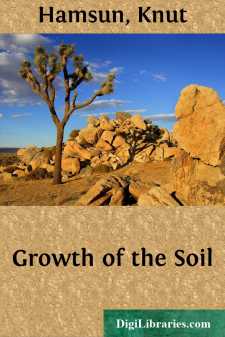Categories
- Antiques & Collectibles 13
- Architecture 36
- Art 48
- Bibles 22
- Biography & Autobiography 813
- Body, Mind & Spirit 141
- Business & Economics 28
- Children's Books 12
- Children's Fiction 9
- Computers 4
- Cooking 94
- Crafts & Hobbies 4
- Drama 346
- Education 46
- Family & Relationships 57
- Fiction 11826
- Games 19
- Gardening 17
- Health & Fitness 34
- History 1377
- House & Home 1
- Humor 147
- Juvenile Fiction 1873
- Juvenile Nonfiction 202
- Language Arts & Disciplines 88
- Law 16
- Literary Collections 686
- Literary Criticism 179
- Mathematics 13
- Medical 41
- Music 40
- Nature 179
- Non-Classifiable 1768
- Performing Arts 7
- Periodicals 1453
- Philosophy 64
- Photography 2
- Poetry 896
- Political Science 203
- Psychology 42
- Reference 154
- Religion 513
- Science 126
- Self-Help 83
- Social Science 81
- Sports & Recreation 34
- Study Aids 3
- Technology & Engineering 59
- Transportation 23
- Travel 463
- True Crime 29
Pan
by: Knut Hamsun
Description:
Excerpt
Knut Hamsun: From Hunger to Harvest
Between "Hunger" and "Growth of the Soil" lies the time generally allotted to a generation, but at first glance the two books seem much farther apart. One expresses the passionate revolt of a homeless wanderer against the conventional routine of modern life. The other celebrates a root-fast existence bounded in every direction by monotonous chores. The issuance of two such books from the same pen suggests to the superficial view a complete reversal of position. The truth, however, is that Hamsun stands today where he has always stood. His objective is the same. If he has changed, it is only in the intensity of his feeling and the mode of his attack. What, above all, he hates and combats is the artificial uselessness of existence which to him has become embodied in the life of the city as opposed to that of the country.
Problems do not enter into the novels of Hamsun in the same manner as they did into the plays of Ibsen. Hamsun would seem to take life as it is, not with any pretense at its complete acceptability, but without hope or avowed intention of making it over. If his tolerance be never free from satire, his satire is on the other hand always easily tolerant. One might almost suspect him of viewing life as something static against which all fight would be futile. Even life's worst brutalities are related with an offhandedness of manner that makes you look for the joke that must be at the bottom of them. The word reform would seem to be strangely eliminated from his dictionary, or, if present, it might be found defined as a humorous conception of something intrinsically unachievable.
Hamsun would not be the artist he is if he were less deceptive. He has his problems no less than Ibsen had, and he is much preoccupied with them even when he appears lost in ribald laughter. They are different from Ibsen's, however, and in that difference lies one of the chief explanations of Hamsun's position as an artist. All of Ibsen's problems became in the last instance reducible to a single relationship—that between the individual and his own self. To be himself was his cry and his task. With this consummation in view, he plumbed every depth of human nature. This one thing achieved, all else became insignificant.
Hamsun begins where Ibsen ended, one might say. The one problem never consciously raised by him as a problem is that of man's duty or ability to express his own nature. That is taken for granted. The figures populating the works of Hamsun, whether centrally placed or moving shadowlike in the periphery, are first of all themselves—agressively, inevitably, unconsciously so, In other words, they are like their creator. They may perish tragically or ridiculously as a result of their common inability to lay violent hand on their own natures. They may go through life warped and dwarfed for lack of an adjustment that to most of us might seem both easy and natural. Their own selves may become more clearly revealed to them by harsh or happy contacts with life, and they may change their surfaces accordingly....





